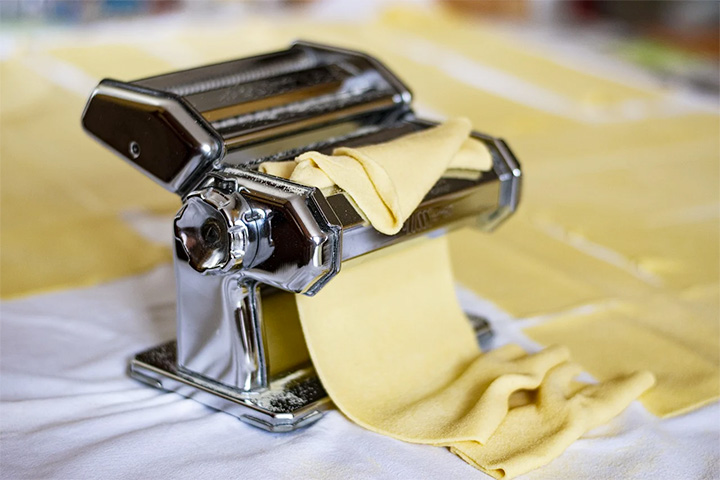
Homemade pasta consists of only three essential ingredients: flour, water, salt (and optionally eggs). Whilst you can make pasta using all-purpose flour, using an authentic fine pasta flour makes a huge difference to your pasta making experience, and you’ll be able to the taste the difference in the finished result as well.

Top tip for flour grade choice: As a general rule, fine pasta shapes such as vermicelli and spaghetti work best with fine flour such as 00 grade. For bigger, more robust pasta shapes like penne or conchiglie (shells) use a course semolina flour or a blend with some course flour in it. As always, everyone develops their own favourite recipes so be brave, experiment and have fun!
Which is the best pasta flour grade to use?
Ideally you’re looking for pasta flour that contains around 10-15% protein to make sure that there’s enough gluten to stretch the dough without breaking it, and to give the pasta that perfect density and bite. Any “00” grade or “0” grade flour will work, but for best results I suggest that you go for a good Italian brand like Napoli Antimo Caputo (Amazon). I think that using a traditional flour like this makes the whole pasta making process much more authentic and enjoyable.
Adding semolina durum wheat flour to pasta dough
Most people prefer their homemade pasta to have a somewhat rustic texture, so for that you’ll also need to add some semolina durum wheat flour, which has been used for generations in Italy. For the best results to start with, just mix a small amount of semolina (Amazon) with your real Italian, finely ground type “00” pasta flour (Amazon). Pasta dough recipes call for varying amounts of semolina flour, and some recipes are even 100% semolina based. Using semolina for dusting your work surface also adds wonderful texture to the outside of your pasta. In summary, be sure to get some semolina flour if you’re serious about homemade pasta!
Recommended flour for homemade pasta
Caputo Semola di Grano Pasta Flour
My personal favorite semolina and one of the best pasta flours made from semolina out there. I recommend this flour if you want to make homemade pasta that tastes good and has that authentic, rustic texture to it.
Napoli Antimo Caputo Type 00 Flour
My favourite type “00” flour, imported from Italy. A very finely ground flour that is high in protein and can be used for both pasta and pizza dough. Mix 2/3 of this with 1/3rd’s of Antimo Caputo Semolina for a wonderful textured, rustic pasta.
Bob’s Red Mill Semolina Flour
This American semolina durum flour surprised me a lot – it’s very easy to work with and does great in both 100%, 66/33 or 50/50 mixes with type “00” flour or even all-purpose flour. This 4-pack comes at a very low price compared to some of the imported Italian semolina’s.
Protein and gluten in pasta flour – the science behind the perfect pasta dough
Choosing a flour with the correct level of protein is essential when making pasta. A high amount of quality protein in the flour will make it easier for the gluten to develop, which will result in a flexible yet shape-retaining, strong dough.
You can use these flours for making pasta
- ✅ Semolina durum wheat flour: 12/13% protein, great for pasta with a bit more texture. Preferably mixed with type “00” for the best results with most types of pasta shapes.
- ✅ Soft wheat type “00“: 12/13% protein, a softer wheat milled with a very fine texture. A great choice if you want pasta with a more smooth texture. For best results choose a type “00” that is specifically made for pasta / pizza (these are the same).
- ✅ All-purpose wheat flour: At 11/12% protein, all-purpose flour works OK for pasta, but will need a bit more kneading to achieve a stronger gluten network. Again, you can combine with semolina durum for a more traditional rustic pasta texture.
- 🚫 Cake or pastry flour: Low amount of protein and gluten. Should be avoided when making pasta. It can work with a lot of effect but really, it’s not worth it.
- 🚫 Strong bread flour: In my experience strong bread flour doesn’t make great pasta. Protein and gluten levels are high but strong flour only tends to work with thicker pasta like lasagne. I find that strong flour almost has too much protein and makes the pasta sticky and too dense.
In summary, and in reality you can use any mix of “00”, semolina and all-purpose flour to make pasta. Only got all-purpose flour in your pantry? I’ve used it plenty of times and it is still 100x better than store bought dried pasta. My go to recipe with all purpose flour is this: Mix 3 large eggs with 2 cups of all-purpose flour. Add 1 tablespoon of olive oil and about a teaspoon of salt.
A higher amount of protein also translates to more gluten strands which are also of a higher quality. When kneading the dough, you’ll be able to reach a higher level of elasticity without the dough breaking when being stretched out. The result are thin pasta sheets that don’t show any signs of breakage. The higher amount of high quality gluten strands in the flour, the level of elasticity that the dough can reach is higher.
Flour with a lower protein amount results in a softer dough. When making a fluffy cake, you choose flour with a very low amount of protein. Your dough should be easy to handle and remain in shape when cooked, hence we opt in for a flour with 12-13% protein as shown in the list above.
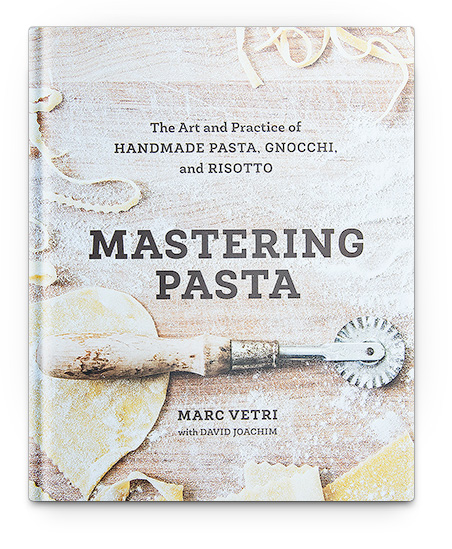
Recommended pasta science & recipe books
If this interests you at all, I really recommend you to read the book “Mastering Pasta – The Art and Practice of Handmade Pasta, Gnocchi and Risotto by Marc Vetri.
Pasta and its ingredients, from start to finish – wheat, gluten, protein, flour – Vetri explains it very clearly.
Different types of pasta flour
Semolina durum wheat flour
Semolina flour is protein-rich and high in gluten. Its a popular choice when making pasta for its stronger bite and more coarse grind. High in protein and gluten, it’s a great choice for making pasta dough with a more golden color.
Semolina is most commonly used as all-purpose flour. Semolina can be recognized by its distinctive yellow color, which comes from the endosperm of hard durum wheat. In general semolina flour consists of 12-13 percent protein and has a low elasticity and higher plasticity than most flour that is used for pasta.
This makes semolina flour a great choice when making extruded pasta such as penne, as the shape of your pasta will not start to change as soon as it has been extruded. Pasta from the store get their golden color from the semolina flour.
Type 00 flour
Type 00 is mainly referred to as flour for pasta & pizza. Type 00 is a The Italians use a grading system for the coarseness of their grind. From coarse to fine and as the Italians like to call them: tipo 2, 1, 0 and 00. Type 00 pasta flour is a favorite choice of flour when making pasta and you want to achieve a smooth texture and softer bite.
If you want a rougher texture to hold sauces better, mix it 50/50 or 25/75 with semolina durum wheat flour, all-purpose flour or bread flour.
The type 0, 00, 1 or whatever number has nothing to do with the kind of wheat used in during the milling process. Both soft and hard wheat can be used for type 00 flour. What you are looking for is hard wheat type 00 pasta flour. The flour I mentioned above are all specifically made for pasta, both the Caputa type 00 and their semolina flour, as well as the Bob’s Red Mill semolina.
The Italian milling company Caputo sells type 00 pasta flour on Amazon and is my favorite choice. The main problem is the delivery times, so it can be worthwhile looking around for a local retailer as well to get your hands on it.
All-purpose flour
Can you use all-purpose flour for making past? Yes! The protein (around 11-12%) and gluten in all-purpose flour is quite comparable to the flour that is traditionally used for making pasta, both type 00 and semolina. The difference is the amount of prep-time, especially the mixing and kneading.
Making pasta dough will take a little bit longer as the kneading and mixing generally takes more time to optimize the gluten network and reach the desired state of your dough.
You can go all-in with the AP flour, but adding either some semolina or type 00 flour will definitely improve your pasta in taste, texture and bite.
What do you want to achieve with the dough?
Pasta dough should be quite elastic, but also retain its shape when left alone. When molding, folding and kneading the dough shouldn’t get dry, brittle or get any cracks.
As this will become quite a long guide about choosing the best pasta flour, I will will divide this guide in several paragraphs. I will begin by explaining what types of flour are available on the market and what types of flour can be used best to make fresh homemade pasta. I will also show several brands of pasta flour that I have used over the years that have proven to be perfect for making pasta. This guide is perfect for those that are making pasta by hand, as well as those that are using a pasta maker.
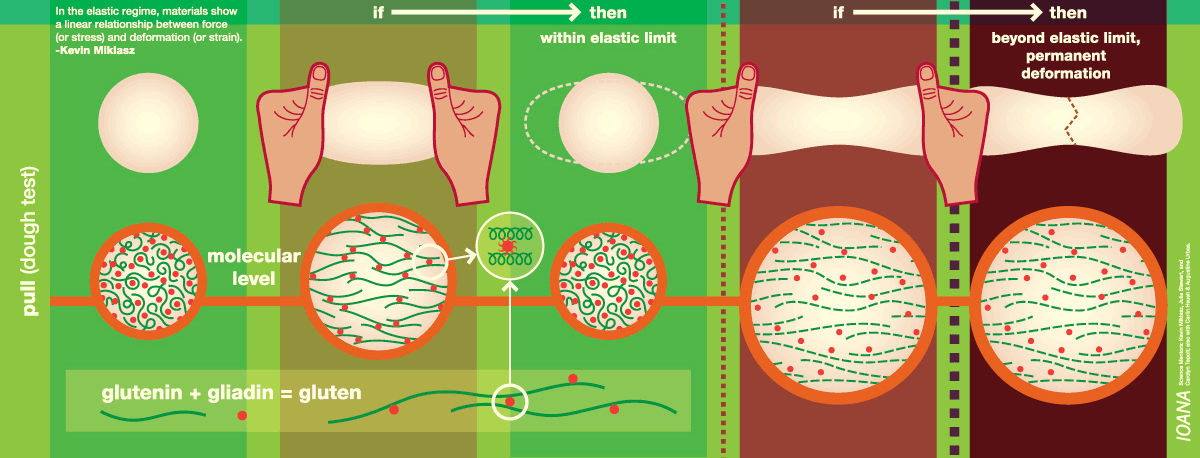
Different types of pasta flour
There are two different types of flour that are most commonly used when making homemade pasta. The first type is semolina flour, which can be found in most pantries at home. This is an all-purpose flour most people use for a lot of things. Semolina flour is the way to go when you are making pasta at home, but there are a few things you need to know about it first.
Before you continue making your own pasta, you have know that there are different types of semolina flour. Don’t worry, I got you covered here.
Double Zero or 00 Flour
Americans categorise their flour in a different way than the Italians. Americans tend to sort the flour by their intended purpose, take bread flour or pastry flour as an example.
Italy has come up with a classification of flour types, based on the fineness of the grind. Italy has classified their flour in three different types: 1, 0 or 00. These numbers indicate how fine or coarse the flour has been ground. Where type 1 is a very coarse kind of flour, type 00 or “double zero flour” is ground into a much more fine flour. Type 0 flour can be best compared with all-purpose flour, and is between the coarse grind of type 1 and the finer grind of the type 00 flour.
You might ask “Why is it important that I use type 1 or type 00 flour for my pasta?”. The answer is that there will be quite a taste difference when you use type 00 flour for your pasta in comparison to using type 1.
Another reason that you should choose double zero flour is that the flour contains a high amount of protein and enough gluten to help the development of the dough’s plasticity and elasticity when it’s being molded into your pasta dough. More about that in the paragraph about protein and gluten.
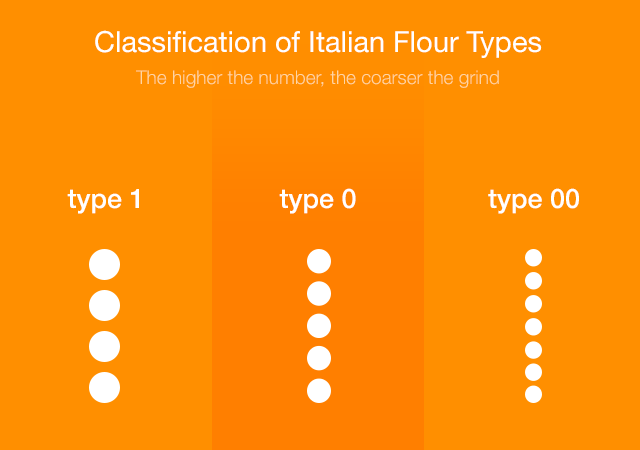
Does this mean that buying either semolina or 00 flour for your pasta will automatically settle for the best flour for pasta? Sadly, the answer is no. While I recommend that most of the time you should definitely choose type 00 flour when you are making pasta at home, just because a label says the flour is type 00 this will not mean that this is the perfect flour for pasta. As mentioned before, the type 00 indicates the fineness of the flour.
Other properties of the flour play vital roles in its usefulness, such as the percentage of protein and the gluten strength. Luckily there are different vendors that produce and sell type 00 flour with the right amount of gluten strength and protein percentages that are considered as the best when making fresh pasta. In another section of this guide, you’ll find a more in-depth explanation of protein and gluten strength in flour.
What is the best pasta flour?
There isn’t a straightforward answer for this, as different situations may call for different types of flour. However, as a thumb rule I advise that if you going to make pasta is that you choose type 00 (or double zero) flour that is intended for pasta. This last bit is very important, as not every type 00 flour is perfect for making pasta.
Not every double zero flour contains the same amount of protein that is needed for making pasta. Certain types of flour that get produced with the intention of making pasta with it contain the best composition of proteins and gluten so your pasta dough will be both malleable and will retain its form once it has been shaped into pasta.
Where to buy 00 flour for pasta?
You can buy pasta flour both online and local. Both Caputo and Bob’s Red Mill are available for sale online.
Refer to my recommended pasta flour at the top. All three brands are quite common and also sell a collection of other types of flour. Since I haven’t explored homemade bread etcetera I don’t know the quality of their other types of flour, but I can definitely recommend their type 00 pasta flour.
In the table at the start of the page you can find the three types of flour that I most commonly use when making fresh homemade pasta. These are the three best types of flour for homemade pasta that I have come across. I also give a quick explanation what flour is most suited for different types of pasta and textures, as this depends on the flour as well.
Best flour for vegan, eggless pasta
Vegan pasta contains no eggs. Making vegan pasta at home isn’t difficult at all, and there are even specific flour types that are best suited for making vegan pasta. When making regular pasta you use eggs and a finer flour, since the eggs will ensure that the flour will bind together.
When you make eggless pasta, you want to use a more coarsely ground type of flour for your pasta, since you use water instead of eggs. The water isn’t a strong enough binding agent for the fine type 00 flour so want to use a flour that is more course such as a good quality type 1 flour.
All-purpose flour does the job for vegan pasta dough just fine, but if you want something better I suggest using semolina flour, which does the job of holding the water and flour together perfectly. I have experimented with combining all-purpose and semolina flour for homemade vegan pasta, and this works great if you use a 50/50 distribution.
Protein and gluten in pasta flour
Protein and gluten play a vital role in the way that the flour can be used. Knowing more about these two components will give you a deeper knowledge about flour in general, not just when it comes to choosing the perfect combination for pasta flour. In the following paragraphs you’ll get to understand the way protein and gluten have an have an influence on the way you can use the flour.
Pasta Flour – Elasticity and Plasticity
These are the two basic principles that you have to understand: elasticity and plasticity. The gluten in pasta flour has two properties, it is both elastic and plastic. When the dough is elastic this means that the dough can be stretched and that it will bounce back into, making is easier to knead. Plasticity means that the dough can be molded into a shape and that it stays put.
The right combination of plasticity and elasticity is the key to perfect pasta dough. This is achieved by having the right amount of protein and gluten in your flour. It will be easy to knead, will roll smoothly through your pasta roller without breaking apart. To achieve this however, you don’t just need the right combination of gluten and protein; you also need to knead the dough long enough so the dough can develop a strong gluten network.
The importance of Protein and Gluten
The smaller the amount of protein is present in the flour, the softer the dough will be. A good example are fluffy cakes that are made with flour that possess very little protein in comparison to other types of flour. If there is more protein in flour, the dough will be harder and “stronger”, which is great if you want to achieve a more chewy product.
If you are interested in learning more about the core elements of flour, I can recommend reading the book ‘Mastering Pasta: The Art and Practice of Handmade Pasta, Gnocchi and Risotto’ by Marc Vetri (Amazon). In this book Vetri clearly explains the concept of the protein and gluten in flour, which is more than just a basis for making pasta; it will come in handy a lot of times in the kitchen. This book has taught me to utilise flour on a whole different level than I did before, and if you are keen on making the most out of your handmade pasta, this is one of the books you should definitely beside your other cookbooks.
So do I NEED special flour for my pasta?
Short answer: no, you don’t need a specific kind of type 00 flour that has been ground to a certain fineness under the seventh full moon of the year (let’s hope that this doesn’t exist). You can make very tasty pasta with all-purpose flour that you can probably grab out of your pantry right now. However, this doesn’t mean that you should always stick with all-purpose flour.
Once you start experimenting with different types of flour you’ll understand that pasta made from different types of flour can be very different from each other. You can make very smooth pasta with type 00 flour or pasta with a more coarse texture when you use a flour made from a more coarse grind. When preparing some pasta recipes, pasta with a more coarse texture can be a good thing, as the sauce will stick on the pasta a lot easier.
Personally I tend to stick to type 00 flour as I prefer the smooth texture on my pasta, but there have been enough occasions where type 00 flour wasn’t anywhere to be found in my pantries. When you are just starting out with making homemade pasta, you should look for a type 00 flour with the right amount of protein. Use my quick pasta flour buyer’s guide if you want to make it as easy as possible for yourself.
Pasta flour F.A.Q.
What is the best flour for pasta?
Either semolina or type “00” flour is the best choice for homemade pasta. You can mix these for varying results that are more suite for different types of fresh pasta.
Can you use regular flour for pasta?
Yes, you can use regular all-purpose flour for making homemade pasta. For the best result it is recommended to go with either semolina or type “00” flour.
Can I use olive oil for pasta dough?
It’s best not to use olive oil when making pasta dough, save it for the pasta itself. The olive oil will make the pasta dough brittle and more prone to cracking if it dries. If you are set on using olive oil, be sparse and add about 1 teaspoon for each cup of flour. Especially when using your hands, pasta flour mixed with olive oil doesn’t make a great pasta dough.
Have any questions regarding choosing the right flour for your pasta or what type of dough is best for a certain type of pasta. Feel free to add a comment and I will get back to you!
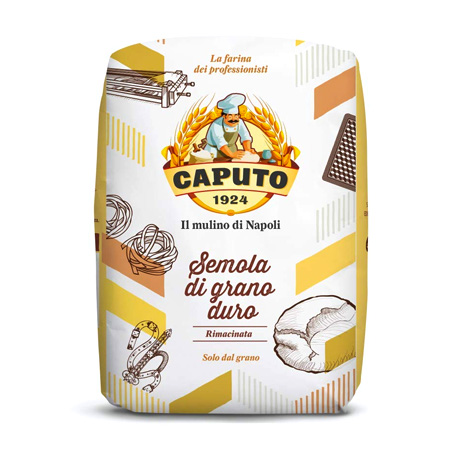
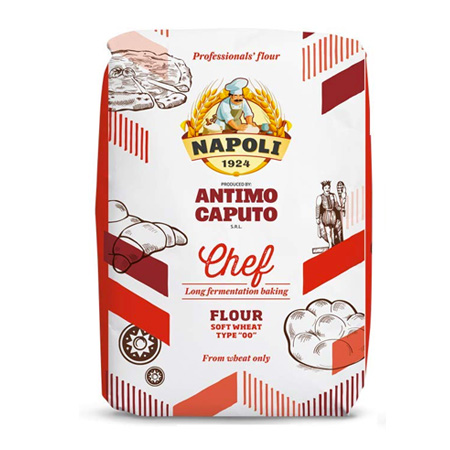
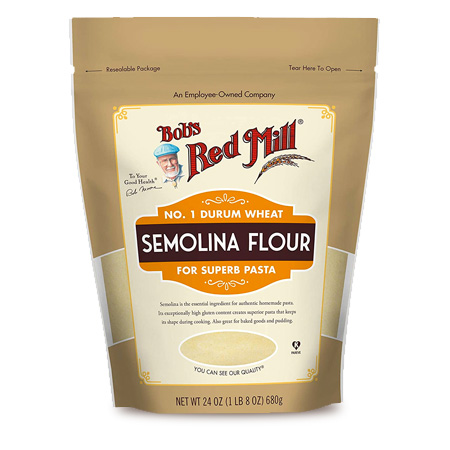
It’s unfortunate that too many American recipe and cooking sites are still using imperial measurements which can be wholly inaccurate compared to using metric weights…especially GRAMS for flour and mixes.
We Americans need to learn that a kitchen scale…cheap as they are…are a critical appliance to have in the kitchen vs using oz and cups for measurements.
For Pasta, I also use a formula for adding just the right mix of flour and eggs.
Total weight of eggs to be used are divided by 2 and then multiplied by 3 to provide the EXACT amount of flour that should be no more or less than required during kneading to eliminate the need for adding flour or water.
Using this formula, I have NEVER had to adjust while making pasta…and I do it all in GRAMS.
Great tips for types of flour on this page! I use Caputo Chef 00 and Caputo semolina mixes for pasta making, and always with great results. Bon Appetit!
Hi. I am making ravioli but can’t get any Type 00 flour. I have AP and semolina. Should is use a combo or only AP?
Hi Carol
I would recommend using a combo of AP and Semolina, as the Semolina will help the ravioli keep its shape while the AP will stop it from being too coarse. I hope that helps. Good luck and let me know if you have any questions!
Hi Julia,
I currently use the Bottene pasta extruder and do 3.5kg batches at a time. My issue is i find the spaghetti and fettuccine very brittle once they are dried and ready to be packaged for the freezer. When i go to grab the pasta most of the strands end up just breaking in half. This is my current recipe for the 3.5kg batch:
1.5kg Semolina
1kg “00”
1kg Rimacinata
21 eggs
Not sure based on everything I’ve read in your articles if i should be increasing 00 flour and reducing the Semolina?? I’m thinking of reducing the 00 and replacing it with all purpose flour, but i am worried the pasta will be too chewy. Looking forward to your reply and thank you in advance. Your article and posts are very helpful.
Cheers
Mario
Hi Mario
I’m glad you find my articles useful and thanks for taking the time to let me know.
I’ll try my best to help with your freezing issues:
You mention that you’re drying and then freezing your pasta. I would say either dry OR freeze it (not both). Dried pasta can be kept for quite a long time in an airtight container.
Whether you choose to dry or freeze, dusting your pasta shapes in a little flour (any kind) will help prevent it sticking.
To dry pasta – lay it out on a baking sheet or similar surface and leave to dry for 24-48 hours, ideally at room temperature. If the pasta is brittle, it’s probably because it’s not dry enough. Leave it for longer and see if it hardens up.
To freeze pasta – dust it with a little flour and freeze relatively quickly. Let it dry for 5-10 minutes maximum.
I hope that helps Mario, let me know how you get on!
I love this post! I’m a beginner cook and I’ve been struggling to find the right flour for my pasta. I’ve been using all-purpose flour, but I think I’ll try this flour next time I make pasta.
Thanks for the feedback Aman, I’m glad you found it useful.
I’ve just got a pasta extruder attachment after being so thrilled with my rolled pasta but finding the texture of my extruded a bit chewy and not sure I like it much more than shop bought. The recipe in the machine has no resting time, just whizz up the mixture and straight into the extruder. Does this mean the gluten doesn’t develop and is why the texture is so different? Any better ways to use an extruder attachment? Thanks for any advice, I’m a pasta newbie,
Hi Bryony. That’s a really good question, and I’m sure plenty of others have had the same issues so let’s look at it in some detail.
The problem you’re having is not under development of gluten, it’s actually the opposite – overdevelopment of gluten!
When making dough for use in an extruder, there are two key differences to making regular dough:
1) Extruded pasta dough should be more crumbly in texture and, importantly, you have to make sure that the gluten has NOT been fully developed. You can achieve this by using slightly less water than normal, and by not kneading the dough so much. Don’t worry about the mixture looking like it’s not coming together. It will complete its gluten development inside the machine during the extrusion process. The warmth of the machine itself will also help with this. If you prep your dough as normal it will end up overdeveloped by the time it pops out of the machine.
2) For best results, use 50% semolina flour. This one is popular with my readers: Caputo Semola di Grano Pasta Flour. I tend to use 7oz semolina flour, 7oz all purpose flour, 4 eggs & 1-2 tbsp water for my extruder dough.
I hope that helps. Good luck and stick with it! Making pasta at home is very satisfying and rewarding.
Thank you for the very informative article. But please, it is “finely ground”, not “fine-grinded”!
Hi Steve
Thanks for your kind words and for taking the time to send me this correction. I have updated the guide.
Excellent article with lots of useful info and things to think about. Well done.
jsa
p.s. there always 12 full moons a year and sometimes 13 (the blue moon) but the pasta info is still good.
Hi Julia,
Maybe I missed the answer but, if no to olive oil in the dough what is the best alternative?
Thanks Julia – I’ve just purchased an automatic pasta and noodle maker and I’m really interested in obtaining different textures for different styles of pasta. I note that you use eggs in all of your pasta – could you tell me what an egg does to the do, opposed to using water? I’m wanting to make raviolis/dumplings etc – any suggestions on combos of flour. Thanks for the great article!
Using eggs will help produce more firm pasta. Fresh egg pasta absorbs more water and grow substantially when cooked compared to pasta made from just water and flour. This is great for most pasta shapes: fettuccine, spaghetti, tagliatelle.. you name them. These pasta all have on thing in common: they’re quite thin!
Thicker pasta shapes, such as orecchiette, cavatelli and malloreddus are more complicated shapes that you don’t want to get too thick when cooked. If you use a water + semolina flour based recipe for the dough, you can expect softer pasta as a result that have less of a bite. This is great for thicker pasta shapes, as you often find in the southern regions of Italy. In the provinces of Puglia and Sicily you’ll often find these hand-made shapes.
For ravioli I recommend that you use a whole-egg based recipe in combination with type 00 pasta flour. If you’re interested in the science behind pasta dough for certain shapes and types of pasta, check out the book “flour + water”. I hope this answers your question, otherwise please reply or send a mail my way! Julia
I have just bought myself a pasta machine ,what sort of flour do I use? in the recipe it said wheat flour. Would that be plain or SR flour?
Regards, Fay
All-purpose flour is generally a good choice for making homemade pasta. For different (and better) results, you can try out semolina and type 00 flour.
I’ve been making homemade ravioli, tortellini, farfalle and other pastas for over 40 years. I found early on that just all-purpose flour can result in “gummy” pasta when cooked, especially with the stuffed pastas. I typically use a 50-50 mixture of all purpose, unbleached flour combined with No. 1 Durham wheat semolina (and a bit of salt, olive oil. An egg depending on the pasta.
If all you have is all-purpose flour, then go for it anyway, but look around for semolina in your grocery store. Just don’t overcook it!
NOTE: there’s many different semolinas you can research and buy on-line.
When do you use 00 and when do you use semolina? When do you use eggs, when to use water?
Hi Scott,
I personally like a mix of durum and all purpose flour with a 1:1 ratio. This makes it easier to keep your pasta a bit more al dente and your pasta will be less limp. I always prefer fresh pasta with eggs, and just go with water when making vegan pasta!
Thanks for the guide, has a lot of useful information, but I have an issue with this part:
“I have quite a few friends that actually love pasta, but had to stop eating store-bought pasta since all the dried pasta contains eggs”/”Store-bought vegan pasta is a lot more expensive than standard pasta since eggless pasta gets produced on a way smaller scale.”
The cheapest pastas in stores are ALWAYS vegan. Barilla, store brand (great value, publix, market pantry), etc are vegan unless they are specifically egg noodles. Eggs bring up production costs, otherwise the ingredients are just water and semolina – you’d have to go out of your way to find dried pasta with egg honestly. I find the expensive/fancy pastas always have egg.
I ran out of all purpose flour can I use 1/2 bread flour to make ravioli
Hi Tara
You’ll get the best ravioli by using fine flour, such as 00 grade. I would advise against using bread flour for ravioli, or indeed for any kind of fresh pasta. It’s technically possible but won’t produce the best results.
I hope that helps. Thanks for reading.
Julia
Hi Barry,
My daughter also has celiac. Recommending a cookbook. “Gluten-free baking classics” by Annalise G Roberts. Recipes include great breads, muffins, cakes and, yes, pasta.
Terrific guide. Thank you so much. I just watched two MasterClass sessions on making pasta which recommended buying 00 flour, but neither mentioned the vital point you shared: “However, as a thumb rule I advise that if you going to make pasta is that you choose type 00 (or double zero) flour that is intended for pasta.“ I wondered why the bag I bought mentioned long-fermentation baking but not pasta. You probably saved my first attempt at ravioli. Also thank you so much for covering vegan pasta.
Please can you advise me on which flours to use for spaghetti, egg tagliatelle and pennes respectively and the use of eggs in the recipes
Hi Heather
You can use 00 or even multi-purpose flour for all of these types of pasta. However, as a general rule the finer the shape of pasta, the finer you want to have the flour. So for spaghetti you’ll get better results with a fine flour like 00, whereas for tagliatelle and pennes you can use either 00 or multi-purpose flour. Avoid the use of strong bread flour by the way, whatever the pasta shape. As always, it’s personal preference so experiment and have fun!
All the best
Julia
In attempting to make pasta dough for the first time for wild mushroom ravioli I used a recipe calling for 1 1/2 cups all purpose flour, 1/4 cup semolina flour, 1 teaspoon salt and olive oil each, 2 eggs, and 1/4 cup blended dried-soaked-drained porcini mushrooms. I used King Arthur organic all purpose flour which contains some malted barley flour and Bob’s Red Mill semolina flour.
The dough had too much elasticity, not much plasticity. I rolled out, it sprang back! It was also quite dry and very hard to knead and roll. I added a little water at a time, but that didn’t help. We’re the flours wrong or might adding another egg to start with have solved the problem? What would you suggest?
I am a Diabetic and regular flour is out of the question. What other flours can be used to make pasta ie. Almond Flour?
Thank you… Maralind
Semolina durum wheat flour consists of less carbs and more protein than regular flour. For diabetes, semolina flour is a good choice. Almond flour can be used as well if you use a substitute for the lacking gluten such as Xanthan gum.
Interesting info on the “00” flour! I will have to purchase some. I’ve been using a 50-50 mixture of semolina and unbleached flour (with eggs/olive oil added) to make my tortellini and raviolis for 40 years or so. Aside from some occasional moisture issues (dry weather), the dough seems to hold up well. However, when making rigatoni by hand – it’s a pain – the noodles collapse. Any thoughts in general with the semolina/unbleached flour method?
Hi Julia,
Thank you for your article it very informative for a beginner trying to make pasta and pizza at home. I’m just looking to try making flat pasta, noodles ,spaghetti, ravioli and pizza dough. I received two different types flour one just says semolina
and the other is a red bag of Caputo 00 flour that says it’s a chef flour that requires a long fermentation, I’m not sure what that means. Since I’m not making extruded pasta I assume I can use the semolina for pizza dough, but will the long fermentation flour be OK for pasta? Do I have to do something special after the dough is made?
Thanks for any help you can give me
Jim
I have seen semolina used to dust a work surface to prevent the uncooked pasta from sticking. Would I use fine or coarse semolina flour for this purpose? Also, will the semolina adhere to the uncooked pasta and change its composition?
Hi Danielle
You can use either, but personally in our family we prefer to use course semolina for dusting because it gives the pasta a more traditional texture. Experiment with both and see which you prefer! The semolina will adhere to the uncooked pasta somewhat, but it won’t penetrate it and won’t change the composition.
Thanks for reading, all the best
Julia
KitchenAid roller set. My noodles tent to break and shorten after stirring into sauce and generally using them.
I want to make the healthiest pasta I can at home. I am planning on making ravioli. I have atta flour which is 100% whole wheat but also extremely fine grain. I use it for pizza dough all the time. Is it better to use atta flour or semolina flour – (1) for good tasting/good textured pasta; and (2) health wise?
I have the same question. NMP, did you ever figure it out? Do you have a recipe to share? I’ve been searching high and low to try to work this out and my results have been lacking.
I am going to make cavatelli and am using a potato flour dough instead of one with ricotta, as a guest cannot tolerate lactose. I have all kinds of flour (semolina, 00, durum, all purpose). What type of flour or mixture of flours do you think would work best for a potato/flour dough? Thank you for your guidance. Angela
Am glad there are people like you in the world
You have answered all my questions I was to ask you at the beginning of this article
Thanks very much
Hi Julia,
The following is probably a question that has no answer.
My wife is a coeliac. Since she was diagnosed I have not used my pasta machine.
Do you know of a gluten free combination of flours that can be used in a pasta machine?
Thanking you in anticipation and kind regards,
Barry
Hi Barry,
Coeliac can make it very difficult to make some homemade recipes. Luckily, there are a few recipes available that work quite well. The folks over at SeriousEats wrote a great article about homemade gluten free pasta. I found that it is more difficult to make gluten-free pasta, especially since the gluten are an important part of the pasta making process. Nonetheless, it is possible to make delicious homemade gluten-free pasta!
Kind regards,
Julia
what pasta flour do you recommend for extruding pasta machine, such as the phillips avance
Hey there.
What tipe of flour is best for making a large amount of pasta and keeping it in a sealed bag? Thanks